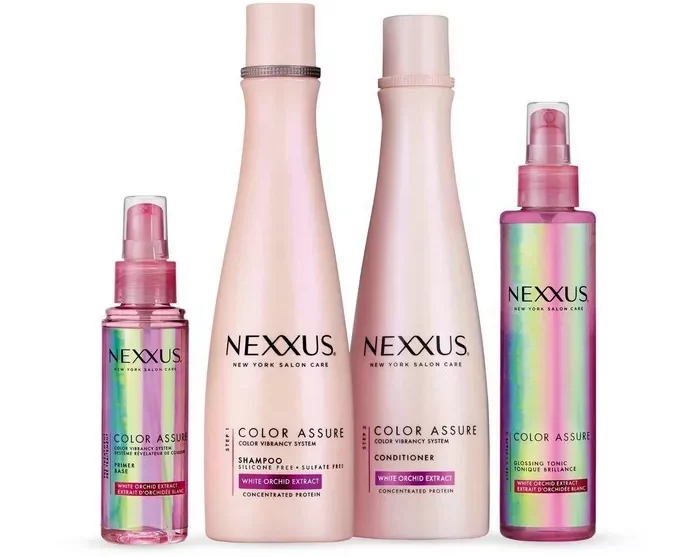In the realm of hair care, one of the most debated topics is the order in which shampoo and conditioner should be applied. Some argue that shampoo should come first to cleanse the hair, while others advocate for conditioning prior to shampooing to retain moisture and protect the strands. This article delves into the science behind both methods, explores their potential benefits and drawbacks, and offers insights to help you determine which approach may be best suited for your hair type and concerns.
Understanding Hair Structure
Before delving into the debate, it’s essential to understand the basic structure of hair. Each strand of hair comprises three layers: the cuticle, cortex, and medulla. The cuticle, the outermost layer, consists of overlapping scales that protect the inner layers from damage. The cortex, located beneath the cuticle, contains proteins responsible for hair strength and elasticity. The medulla, found at the core of thicker hairs, serves primarily as a channel for nutrients.
When hair becomes damaged or dry, the cuticle scales may lift, leading to moisture loss and a rough texture. Proper hair care aims to maintain the integrity of the cuticle while providing essential moisture and nutrients to the cortex and medulla.
The Argument for Shampoo First
Proponents of shampooing first argue that it is essential to cleanse the hair and scalp of dirt, oil, and product buildup before applying conditioner. Shampoos typically contain surfactants, such as sulfates, which help to remove impurities by binding to oil and dirt and allowing them to be rinsed away with water.
By starting with shampoo, you effectively cleanse the hair and scalp, preparing them to receive the conditioning agents present in the conditioner. This ensures that the conditioner can penetrate the hair shaft more effectively, providing hydration and nourishment where it’s needed most.
Additionally, shampooing first may be particularly beneficial for individuals with oily or fine hair. By removing excess oil and buildup, shampooing can help to add volume and prevent the hair from appearing greasy or weighed down.
The Argument for Conditioner First
On the other side of the debate are those who advocate for conditioning before shampooing. This approach, sometimes referred to as “pre-conditioning,” involves applying conditioner to the hair before shampooing to provide a protective barrier and minimize moisture loss during the cleansing process.
Conditioners typically contain ingredients such as silicones, oils, and proteins that coat the hair shaft, smoothing the cuticle and providing hydration. By applying conditioner first, you can help to seal the hair cuticle, reducing damage caused by friction and preventing moisture loss during shampooing.
Furthermore, conditioning before shampooing may be beneficial for individuals with dry, damaged, or curly hair. These hair types often require extra moisture and protection to maintain their health and appearance. Pre-conditioning can help to soften and detangle the hair, making it easier to manage and style.
The Verdict: It Depends on Your Hair Type and Concerns
So, which approach should you take? Ultimately, the decision to apply shampoo or conditioner first depends on your individual hair type, concerns, and preferences. Here are some factors to consider when making your choice:
1. Hair Type: Consider whether your hair is oily, dry, damaged, fine, thick, curly, or straight. Individuals with oily or fine hair may benefit from shampooing first to remove excess oil and buildup, while those with dry or damaged hair may prefer to condition first to provide extra hydration and protection.
2. Scalp Health: If you have a sensitive or dry scalp, you may want to prioritize conditioning first to minimize irritation and maintain moisture levels. Conversely, if you struggle with dandruff or product buildup on the scalp, shampooing first may be more effective at cleansing and refreshing the scalp.
3. Styling Preferences: Think about your styling routine and how your hair behaves after washing. If you prefer voluminous styles or struggle with flat, limp hair, shampooing first may help to add body and texture. If you typically struggle with tangles or frizz, pre-conditioning may be beneficial for smoothing and detangling the hair.
4. Environmental Factors: Consider the environmental conditions in your area, such as humidity levels, pollution, and exposure to UV radiation. These factors can affect the health and appearance of your hair and may influence whether you choose to prioritize cleansing or conditioning.
Experimentation and Adaptation
Ultimately, finding the right hair care routine often involves a process of trial and error. Don’t be afraid to experiment with different methods and products to see what works best for your hair. You may find that your needs change over time due to factors such as seasonal changes, hormonal fluctuations, or lifestyle adjustments.
In conclusion, whether you choose to apply shampoo or conditioner first is a personal decision that should be based on your individual hair type, concerns, and preferences. Both methods offer potential benefits, and there is no one-size-fits-all approach. By understanding the science behind each method and considering your unique hair needs, you can tailor your hair care routine to achieve healthy, beautiful locks.
Remember to listen to your hair and adapt your routine as needed to keep it looking and feeling its best. With the right care and attention, you can maintain healthy, vibrant hair that reflects your unique style and personality.


